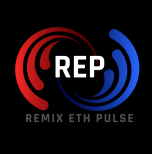Article: Report: Stablecoin Bill in the United States Could Displace USDT’s Position in the US
S&P Global Ratings released a report last Wednesday analyzing the potential impact of the Lummis-Gillibrand Payment Stablecoin Act, a bipartisan stablecoin proposal introduced by the US Senate earlier this month, on the stablecoin market.
The bill allows non-bank financial institutions registered with the Federal Reserve System (also known as the Fed) to issue stablecoins, with a maximum issuance limit of $10 billion. There is no such limit for banking institutions. Additionally, the bill establishes strict requirements for asset reserves and operational transparency.
According to the report, this legislation not only promotes the wider use of stablecoins in daily and institutional transactions, stabilizing the market and increasing user confidence but also provides a competitive advantage for banks by encouraging their entry into the stablecoin market and ensuring a fair competitive environment for banks entering the stablecoin market.
However, the $10 billion issuance limit may not be good news for Tether, the largest stablecoin issuer with a current market value of $110 billion. Analysts Mohamed Damak and Andrew O’Neill, who wrote the report, explained that Tether, as a non-US registered issuer, does not meet the definition of a payment stablecoin in the proposed bill. This means that US institutions cannot hold or use USDT for transactions, reducing the demand for USDT in the US and weakening its dominant position in the global stablecoin market while increasing the issuance of stablecoins by US institutions.
However, the report also points out that USDT’s trading activity is mainly concentrated in emerging markets outside the US and is primarily driven by retail users and international remittances. While Tether may be affected by the bill, the impact may not be as significant as imagined.
Is the bill really beneficial for US institutions?
On the other hand, is this bill truly advantageous for US institutions?
Currently, Circle’s USDC is the second-largest stablecoin with a market value of around $34 billion. However, under the bill, Circle is classified as a “non-bank financial institution” and is subject to the $10 billion issuance limit, which means it will have to find an alternative solution.
Paxos, the cooperative issuer that includes PayPal’s stablecoin PYUSD, has a regulated trust license from the New York Department of Financial Services. However, the combined market value of all its stablecoins is far less than $10 billion, making regulation less significant.
The report concludes by affirming the potential impact of the stablecoin bill, stating that its passage will accelerate institutional blockchain technology innovation, particularly in tokenized on-chain payments and digital bond issuance. The growth in demand for stablecoin usage by institutions will create opportunities for banks as stablecoin issuers.
Why is stablecoin regulation crucial for maintaining the US dollar’s dominance?
On the 17th of this month, US Senators Cynthia Lummis (Republican from Wyoming) and Kirsten Gillibrand (Democrat from New York) jointly proposed a bipartisan stablecoin bill aimed at regulating the operation of stablecoins in the United States.
The Lummis-Gillibrand Payment Stablecoin Act defines “payment stablecoin” as any digital asset pegged 1:1 to the US dollar and used for payment or settlement, with the issuer obligated to convert the tokens into dollars, and the asset not classified as a security.
In addition to clearly defining the scope of application, the bill extensively regulates the reserve and operational obligations of payment stablecoin issuers, with the following five key points:
– Payment stablecoin issuers must register with the Federal Reserve as “non-depository trust institutions” (essentially non-bank financial institutions) or “depository institutions authorized to be national payment stablecoin issuers” (essentially banking institutions).
– Payment stablecoin issuers must establish subsidiary companies dedicated to issuing payment stablecoins.
– Payment stablecoin issuers must ensure that their tokens have fully reserved assets, which can be cash or equivalent cash assets, and have an obligation to publicly disclose reserves.
– Payment stablecoin issuers and their users must comply with US anti-money laundering and sanction regulations and must not use stablecoins for illegal or unauthorized purposes.
– Payment stablecoin issuers need to hire a non-depository trust institution as a reserve asset custodian, and this custodian must use a depository institution as its sub-custodian (providing a dual safeguard mechanism).
However, the bill also sets a $10 billion limit for “non-depository trust institutions”. If a stablecoin issuer exceeds this amount, they must become a “depository institution authorized to be a national payment stablecoin issuer”.
The bill also prohibits algorithmic stablecoins that maintain prices through algorithms and are not fully reserved, likely to prevent a repeat of the Terra-Luna collapse.
Kirsten Gillibrand, the Democratic Senator who proposed the bill, stated in a statement that a clear stablecoin regulatory framework is “absolutely crucial” for maintaining the US dollar’s dominance. She believes that the legislation, which specifies a 1:1 reserve, prohibits algorithmic stablecoins, and requires compliance with anti-money laundering and sanction regulations, maximizes consumer protection and can gain necessary support in both the Senate and the House of Representatives.
Cynthia Lummis, the Republican Senator who co-sponsored the bill, added that the legislation meets the expanding needs of the constantly evolving financial industry and reiterated the importance of the US dollar’s dominant position.
Countdown to the Presidential Election! Stablecoin Bills Stalled in Both Houses
In addition to the recent Lummis-Gillibrand Payment Stablecoin Act, Lummis and Gillibrand have previously co-sponsored several bills aimed at regulating and addressing issues in the digital asset market, including a bill that clearly defines decentralized finance and outlines the jurisdiction of federal agencies such as the Commodities Futures Trading Commission (CFTC) in the cryptocurrency market.
Although stablecoins have long been considered the most likely category of cryptocurrencies to have dedicated laws in the US, the Financial Services Committee of the US House of Representatives began drafting its version of the “Stablecoin Bill” in 2022 and submitted it for review. However, after 20 months, there has been no progress.
According to the US legislative process, once a legislative proposal is passed in one house, it is sent to the other house for review. Similar or related proposals are usually passed in both houses simultaneously and then sent to the President.
However, with the upcoming Presidential Election and the uncertain situation, these bills, like many others, have been temporarily put on hold and have not made any progress.
Source:
Coindesk
Coindesk
Bitcoin.com
The Block
Proofread and edited by: Gao Jingyuan

